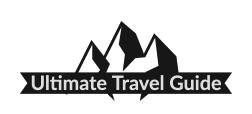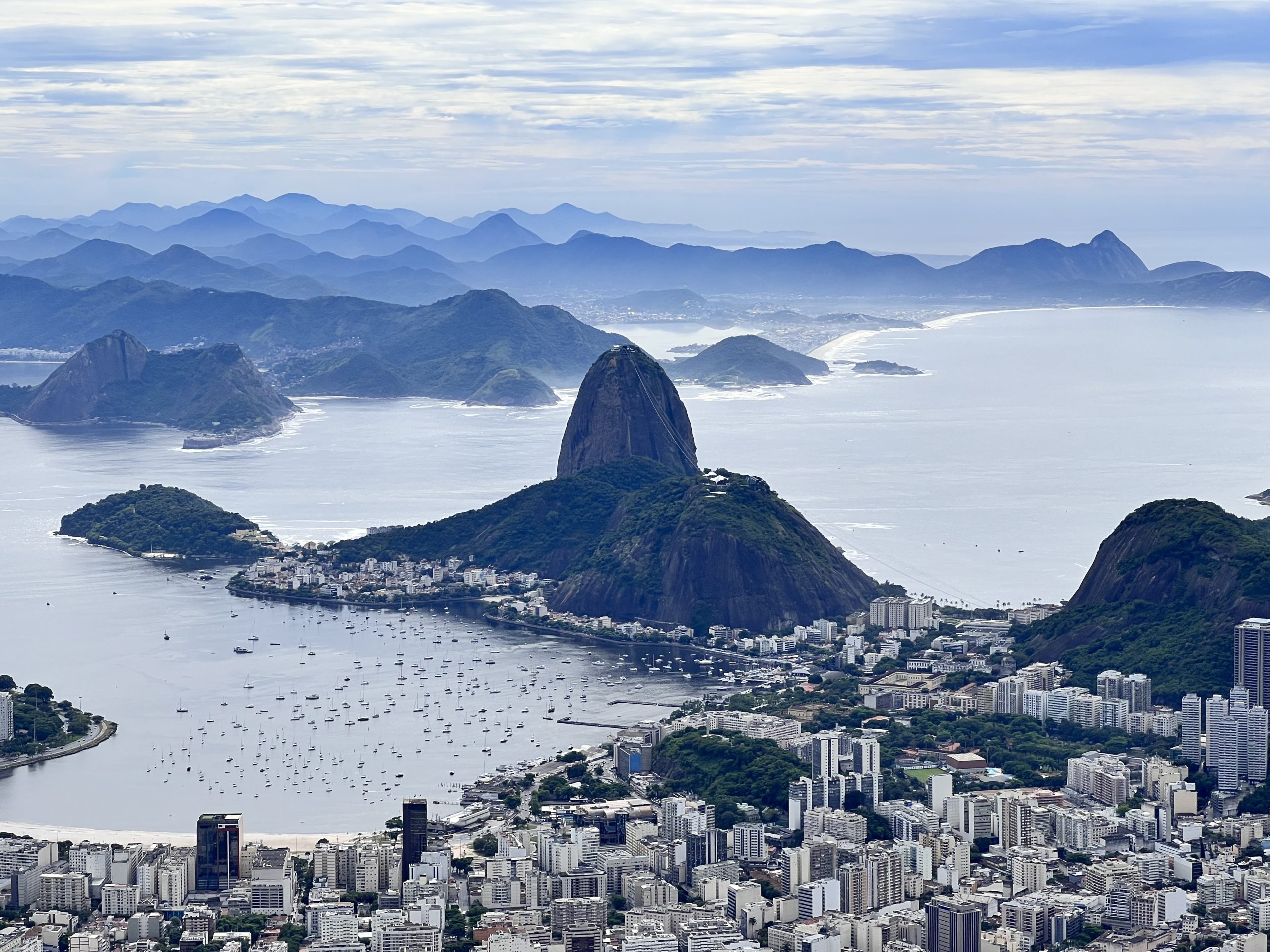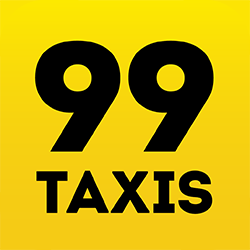When talking about Brazil Travel Guide 2024, the words Football and Carnival are always present. With its beautiful, lively, and warm people and culture, Brazil is known around the world. However, the country has way more to offer.
For starters, Brazil is almost half of Latin America (by size), which means it has a lot of diversity in terms of culture, food, and art. In addition, the country is a paradise for adventure seekers with its wide range of forest and mountain hikes. Moving on to the Ultimate Travel Guide 2024, Brazil also boasts attractions that are part of the Wonders of the Earth, adding to its already impressive list of destinations. And let’s not forget about Brazil’s beaches, which have endless choices, all of which are exquisite.
To help you navigate this vast and diverse country, here is a map that showcases all the 26 states of Brazil divided by regions.
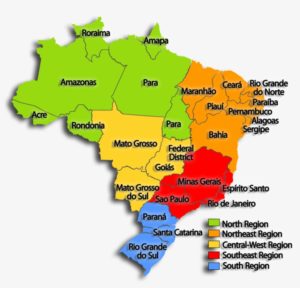
Best season to go to Brazil
There are several beautiful places in Brazil, and each of these has unique highlights depending on the season.
- If you wish to go to the Northern side of the country to visit the steamy jungle of Amazon, the best time to go is around June to September before the rainy season starts.
- On the other hand, if you’re into the famous Brazilian carnival, summertime (December-February) is also a good time to visit. However, this is also a high season. Hence, travel expenses are much higher, and most flights are fully booked.
- If you plan to enjoy Brazil’s beautiful beaches in the South, the best time to travel is also around December to March because the winter season can be really cold.
Temperature in Brazil
Visa options in Brazil
Brazil has 2 Major classifications of Visas. These are:
Tourist Visa or Brazil Visit Visa: This type of Visa is for short-term stays not longer than 90 days. Under this category, there are three other types, which are:
- Brazil Tourist Visa
- Brazil Business Visa
- Brazil Transit Visa
However, since 2019, the Brazilian government has provided a Visa Exempt for any tourists from any country for 90-days, provided that they wouldn’t seek employment. Below is the list of countries that are included in this Visa Exempt Policy.
| Antigua and Barbuda | Russia | Honduras | Venezuela |
| Australia | San Marino | Indonesia (up to 30 days) | Andorra |
| Belarus | Singapore (up to 30 days) | Japan | Armenia |
| Bosnia and Herzegovina | Sovereign Military Order of Malta | Macau | Barbados |
| Colombia | Thailand | Monaco | Bolivia |
| Ecuador | Turkey | Morocco | Chile |
| Georgia | United Kingdom | Nicaragua | Dominica |
| Guyana | Vatican City | Panama | Fiji |
| Iceland | Albania | Philippines | Guatemala |
| Jamaica | Argentina | Saint Kitts and Nevis | Hong Kong |
| Liechtenstein | Bahamas | Serbia | Israel |
| Mexico | Belize | South Africa | Kazakhstan |
| Montenegro | Canada | Suriname | Malaysia |
| New Zealand | Costa Rica | Trinidad and Tobago | Mongolia |
| Norway | El Salvador | Ukraine | Namibia |
| North Macedonia | Qatar | South Korea | Switzerland |
| Paraguay | Saint Vincent and the Grenadines | Seychelles | Tunisia |
| Unitred Arab Emirates | Uruguay |
Temporary Visa or Brazil Temporary Visa: This type of visa is for long-term stays and is required to be registered within the 90-day period on the Brazilian Federal Police (DPF). This registration shall be renewed 1-3 years after. Under this category, these types of visas are included:
- Brazil Work Visa
- Brazil Student Visa
- Brazil Family Reunion Visa
- Brazil Retirement Visa
- Brazil Digital Nomad Visa
Updated: October 2022
Sockets and Plugs to use in Brazil
Type C and N plugs

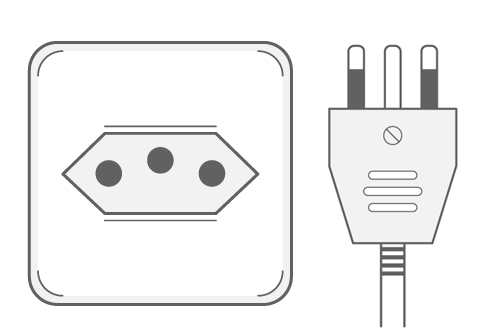
Currency & Exchange rate
The official currency in Brazil is Brazilian Real (BRL).
| Currency | Amount in BRL |
| 1 USD | 5.165 BRL |
| 1 EUR | 5.22 BRL |
| 1 GBP | 5.97 BRL |
| 1 CAD | 3.90 BRL |
| 1 USD | 5.165 BRL |
| 5 USD | 26.58 BRL |
| 10 USD | 53.17 BRL |
| 20 USD | 106.34 BRL |
| 100 USD | 531.69 BRL |
Exchange Rate Converter
Fee-free ATM in Brazil
If you are using international cards, expect that Brazilian ATMs do have little fees, but this depends on which bank you’ll get your money from. To avoid such fees, getting a travel card is recommended.
Withdrawal Fees for International Cards:
- Bradesco: 5.5% fee
- Santander: Fees are deducted to the local currencies of the cardholder; contacting the bank is an option to know the amount.
Other Banks/ATMs that offer International Card Withdrawal:
- Banco do Brazil: with fees
- Banco 24 Horas: with fees
Also, I would recommend using online banks like Wise, which allows you to take money from ATM abroad without commission (2 times per month), and has one of the best conversion rates.
*Note, if ATM is asking for a conversion rate, use the local currency, as your bank probably would provide a better conversion rate, than ATM.
Cost of living in Brazil
Below is a Brazil Travel Guide 2024 table showing the prices for popular items while visiting Brazil
| Local Price (USD) | Fair price (USD) | Tourist price (USD) | |
| Meal (Inexpensive Restaurant) | $5 | 6-10 | 10+ |
| Western Fastfood Meal | $5.79 | 6-8 | 9+ |
| Water (0.33 Liter) | $0.73 | 1-2 | 3+ |
| Domestic Beer (0.5-liter bottle) at a Market | $1.16 | 1.50-2 | 3+ |
| Domestic Beer (0.5-liter bottle) at a Pub | $1.65 | 2-2.50 | 3+ |
| Taxi Ride (1 mile) | $1.24 | 1.50-2 | 2+ |
| Internet (Unlimited Data, Cable/ADSL) | $33.22 | 35-38 | 38+ |
| Monthly Rent of an Apartment (1 bedroom) in City Center | $339.58 | 340-350 | 360+ |
| Monthly Rent of an Apartment (1 bedroom) Outside of Center | $233.01 | 235-240 | 245+ |
| Monthly Rent of an Apartment (3 bedrooms) in City Center | $666.65 | 670-680 | 690+ |
Brazilian Phone operators
Brazil’s five biggest telecoms are the following:
- TELEFÔNICA BRASIL (VIVO): The leading telecom company carries 33% of the overall telecom market in the country.
- AMÉRICA MÓVIL (CLARO): The second leading is the leader for both fixed – broadband and pay-TV market.
- OI: This company acquires 16% of the overall telecom market in the country.
- TELECOM ITALIA (TIM)
- AT&T (SKY): This company is the leader in providing satellite pay TV.
Personally, I would recommend Claro for its download and upload speed. It also has a great reputation in the overall market.
Another option is to use eSim like Airalo.
How to get from Airport in Rio de Janeiro and Sao Paulo
The two major airports of Brazil are located in Rio de Janeiro and Sao Paulo. The mode of transportation below is sourced from local taxis.
Rio de Janeiro (GIG AIRPORT)
| Destination | Duration | Price |
| City Center* | 25 mins. | $13-20 USD |
| Copacabana* | 19 mins. | $15-20 USD |
| Parque Nacional da Tujica | 31 mins. | $18-22 USD |
Sao Paulo (GRU AIRPORT)
| Destination | Duration | Price |
| City Center* | 35-45 mins. | $25-35 USD |
| Avenida Paulista | 29 mins. | $17-22 USD |
| Feira Livre da Vila Madalena | 1h 41 mins. | $19-23 USD |
* You can also take the metro, plus a bus transfer from GIG to the City Center for a total of 8 BRL.
* You can also take the metro, plus a bus transfer from GIG to Copacabana for a total of 8 BRL.
* You can also take the train or metro from GRU to City Center for 4 BRL. Bus is also an option for 7 BRL.
For private taxis like uber, it is best to book in advance.
Is Brazil safe?
Despite Brazil’s beauty the locals warn most travelers to be observant and alert, especially in metropolitan areas.
The locals of Brazil warn travelers to be wary of crimes, especially robbery. A robbery in Brazil usually ends up with a simple resolution and little to zero punishments. Hence, to counteract the possible risks, travelers are advised to avoid going out late at night, avoid flashing valuable things and don’t be afraid to ask for safe places.
Frankly, every inch of the Earth has its own risks; however, it doesn’t mean that a place must be totally avoided. On that note, people must also know about cities such as Florianópolis, Balneário Camboriú, Curitiba, Gramado, Maringá, and Londrina which are safer cities as compared to capital cities such as Rio de Janeiro. Lastly, health is also taken into account by the country. A program called “Responsible Tourism Seal” was created by the Ministry of Tourism to have Brazil as safe as possible – especially with the ongoing health issue.
Travel Insurance
If you are traveling, I would say insurance is a must. I saw so many times when people get injuries and health problems, and their relatives/friends are organizing fundraising campaigns for the treatments.
The health system here is very expensive. So it’s better to be safe than sorry. Hopefully, you won’t need to use it.
I personally buy for EUR 42/month (can have a daily option) SafetyWings travel insurance. That gives me peace of mind. It has $250 deductible, with $250 000 max limit. I had 2 claims, and both of them got covered.
*This is an affiliate link. This means I will get a commission if you use it. But as I mentioned before I am using this insurance myself.
Brazil’s co-working and co-living places
Sao Paulo
Osmose Coworking – Unidade 24/7 (Co-working)
All Living (Co-working & Co-living)
Rio de Janeiro
Florianopolis
Brazil FB Groups & Community
Where to stay in Brazil
Rio de Janeiro: is a perfect spot for tourists. It has such beautiful attractions that may bring you closer to nature. These are the places where I recommend staying:
- Copacabana – not only it is popular, but this area also offers cheap and pricey accommodations, bars, restaurants, and shops.
- Ipanema – this place has a bigger variety of places to stay in, plus the beach is wonderful.
- Leme – a smaller and quieter place that is connected to Copacabana.

Sao Paulo: If you want to be indulged in culture and fun, Sao Paulo is the best way to go. It has the most lively nightlife, exquisite food, and an amazing cultural and art scene. These are the places where I recommend staying:
- Pinheiros/Vila Madalena – this neighborhood is very lively as it offers the funkiest bars, satisfying restaurants, cafes, and streets full of people from day to night.
- Jardim Paulista/Jardins – museums, galleries, and gourmet restaurants are around this area, yet it still offers budget hostels.
- Vila Mariana – this area is convenient since there are some metro stations that are within walking distance.

Florianopolis: This place is known for its best beaches. These are the places where I recommend staying:
- City Centre – this area offers the best choices for hotels.
- Canasvieiras/Ingleses – this neighborhood is a great option if you want to be near calm beaches and fun nightlife.
- Campeche – opposing the calm beaches in Canasvierias, Campeche’s beaches have strong waves perfect for surfing and other water activities.
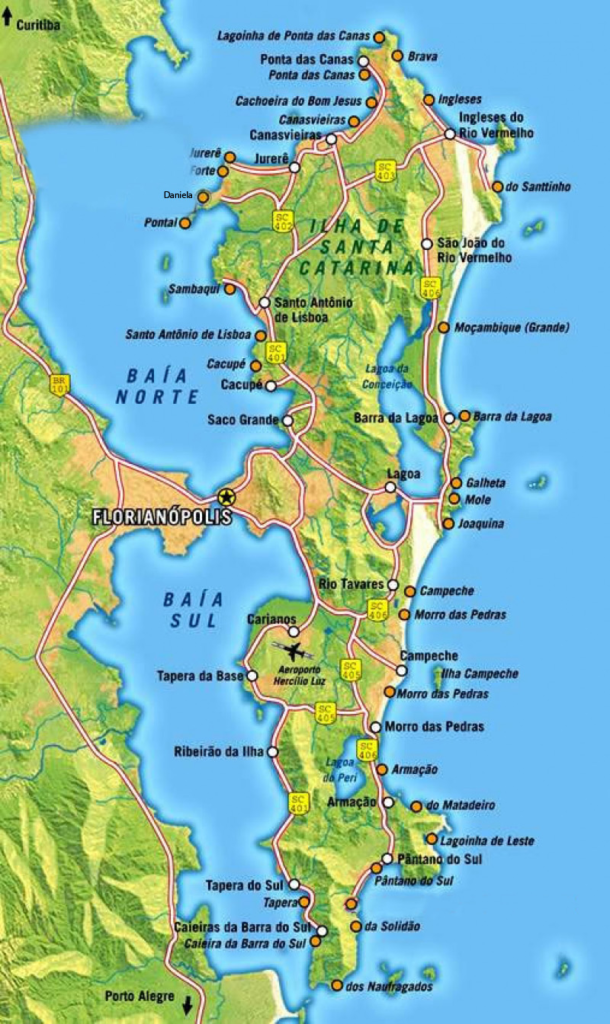
Things to do in Brazil
Here is the list of things you can do in Brazil:
7,10 and 14 days Brazil itinerary
| Day 1: It is recommended to fly straight to the beautiful city of Rio de Janeiro. As you recover from the tiring travel, you can enjoy the solemn vibe and sun in Copacabana or Ipanema Beach. Day 2: From there, you should start your visit to Christ the Redeemer which attracts most tourists. While you’re there, you could also enjoy the view of the whole city. After that, you may go to the Botanical Garden which is not far from the previous place. Day 3: The nightlife in this city is great to experience. Samba Clubs in Lapa welcomes you to experience the fun. But before that, you might want to dig into the bargain hunt at Feira Do Lavradio and visit the famous stairs in Santa Teresa. Day 4: After the fun in Rio de Janeiro, the next destination would be Sao Paulo. Feira Livre da Vila Madalena is a great neighborhood to indulge in Brazilian culture. It carries nice cafes, vintage shops, and authentic restaurants. Day 5: Get lost in the amazing artworks at the Museum of Art of São Paulo at Avenida Paulista and enjoy the sunset in Praça do Pôr do Sol in the afternoon. Day 6: After indulging in Brazilian culture, enjoy the beach experience in Praia Mole, Florianopolis. Day 7: Matadeiro Beach would be the next stop, where you can enjoy surfing in its beautiful body of water. You can end your day by visiting Riberão da Ilha where the seafood is exquisite. Day 8: While you’re at Florianopolis, might as well try sandboarding in Joaquina Dunes. Day 9: Although it is quite far, visiting the Iguazu Falls is worth every penny. Day 10: Near the area, you can go bird watching in Parque Das Aves. Day 11: After the nature trips, it’s time to visit landmarks. Salvador is the way to go. Enjoy the streets and food as you touchdown from Iguazu. Day 12: Visit the beautifully lined colorful houses in Pelourinho. Day 13: To learn about the roots of the world-famous local carnival, you can visit Casa do Carnaval da Bahia. Day 14: The last day of the tour usually ends with souvenir shopping, and Mercado Modelo is the way to go. |
COVID-19 rules in Brazil
Prior to entering the country, a traveler must have:
- Proof of vaccination, printed or in electronic form, in Portuguese, English, or Spanish; OR
- Proof of a negative or not detected antigen test or RT-PCR, taken one day prior to boarding.
The Healthcare system is different in every city in the country. Some cities require the wearing of face masks yet some are permissive to have them voluntarily. Moreover, some establishments may ask for proof of COVID-19 vaccination, adding an extra layer of precaution to the health and safety measures.
In case a traveler feels symptoms, they must undergo isolation for 14 days. However, in emergency and severe cases wherein difficulty of breath is present, hospitalization is the most effective option. Just keep in mind that some hospitals don’t accept credit cards. Hence, health insurance would come in handy, , especially for unforeseen circumstances.
Good to know
- It’s safer to walk with lesser cash on hand as it prevents the risks of getting mugged.
- Most tips at restaurants would be included in the receipt, however if not, it is advised to leave at least 10%.
- Withdrawing on Fridays, especially on the first Friday of the month would be hectic since this is the time when people get their pensions and paychecks.
- Tap water in Brazil is not drinkable.
- Avoid hanging belongings over a chair for safety.
- Not everyone in Brazil knows English, hence, knowing Portuguese (official language) might help
- Most women would greet with a kiss on the cheek while men prefer handshakes.
- Drinking is part of the culture.
- Brazilians are often late comers and they could be late for 15 minutes – 1 hour.
- The Northern part of the country where the Amazon is located is humid and hot all year round.
10 Basic words to know in Brazil
1. Bom dia – Good morning
2. Como está/vai? – How are you/ How’s it going?
3. Eu gostaria de pedir/comer – I would like to order/eat…
4. Oi/Olá: Hello
5. Tchau: Goodbye
6. Por favor: Please
7. De nada: You’re welcome
8. Obrigado/a: Thank you
9. Sim: Yes
10. Não: No
Check out more travel guide to Bolivia, South of Thailand, Colombia, Egypt, Tenerife, Bali and other amazing Ultimate Travel Guide.
